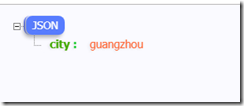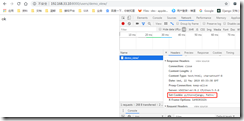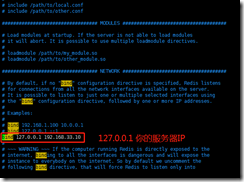request response cookie session
request
1. url传递参数
1)参数没有命名, 如:
users/views
def weather(request, city, year): print(city) print(year) return HttpResponse('OK')
users/urls
from django.conf.urls import url from . import views urlpatterns = [ # url(路径, 视图) url(r'^weather/([a-z]+)/(\d{4})/$', views.weather, name='weather'), ]
2) 参数命名, 如
from django.conf.urls import url from . import views urlpatterns = [ # url(路径, 视图) # url(r'^weather/([a-z]+)/(\d{4})/$', views.weather, name='weather'), url(r'^weather/(?P<city>[a-z]+)/(?P<year>\d{4})/$', views.weather), ]
?P<city> 就是给参数命名为city
2. django中的querydict对象
1) 方法get():根据键获取值
如果键不存在则返回None值,可以设置默认值进行后续处理
dict.get('键',默认值)
# 可简写为
dict['键']
2) 方法getlist():根据键获取值,值以列表返回,可以获取指定键的所有值
如果键不存在则返回空列表[],可以设置默认值进行后续处理
dict.getlist('键',默认值)
3. 查询字符串Query string
比如 字符串参数 ?k1=v1&k2=v2 可以通过request.GET属性获取返回QueryDict对象。
url为
http://192.168.33.10:8000/users/qs/?a=10&b=20views为
def qs(request): a = request.GET.get('a') b = request.GET.get('b') alist = request.GET.getlist('a') print(a) print(b) print(alist) return HttpResponse('OK')
返回结果为:
3. 表单数据类型Form Data
1) 前端发送的数据是表单类型,可以通过request.POST属性获取,返回QueryDict对象
def get_body(request): a = request.POST.get('a') b = request.POST.get('b') alist = request.POST.getlist('a') print(a) print(b) print(alist) return HttpResponse('OK')
4. 非表单数据类型Non Form Data
可以通过request.body属性获取最原始的请求体数据,自己按照请求体格式(JSON、XML等)进行解析。request.body返回bytes类型。
例如要获取请求体中的如下JSON数据
{"a": 1, "b": 2}
import json def get_body_json(request): json_str = request.body json_str = json_str.decode() # python3.6 无需执行此步 req_data = json.loads(json_str) print(req_data['a']) print(req_data['b']) return HttpResponse('OK')
5. 请求头
可以通过request.META属性获取请求头headers中的数据,request.META为字典类型。
CONTENT_LENGTH– The length of the request body (as a string).CONTENT_TYPE– The MIME type of the request body.HTTP_ACCEPT– Acceptable content types for the response.HTTP_ACCEPT_ENCODING– Acceptable encodings for the response.HTTP_ACCEPT_LANGUAGE– Acceptable languages for the response.HTTP_HOST– The HTTP Host header sent by the client.HTTP_REFERER– The referring page, if any.HTTP_USER_AGENT– The client’s user-agent string.QUERY_STRING– The query string, as a single (unparsed) string.REMOTE_ADDR– The IP address of the client.REMOTE_HOST– The hostname of the client.REMOTE_USER– The user authenticated by the Web server, if any.REQUEST_METHOD– A string such as"GET"or"POST".SERVER_NAME– The hostname of the server.SERVER_PORT– The port of the server (as a string).
具体使用如:
def get_headers(request): print(request.META['CONTENT_TYPE']) return HttpResponse('OK')
6. 其他HttpRequest对象
- method:一个字符串,表示请求使用的HTTP方法,常用值包括:'GET'、'POST'。
- user:请求的用户对象。
- path:一个字符串,表示请求的页面的完整路径,不包含域名和参数部分。
- FILES:一个类似于字典的对象,包含所有的上传文件。
def demo_view(request): print(request.META['CONTENT_TYPE']) # text/plain print(request.method) # GET print(request.path) # /users/demo_view/ print(request.encoding) return HttpResponse('ok')
Response
1. HttpResponse
1) 可以使用django.http.HttpResponse来构造响应对象。
HttpResponse(content=响应体, content_type=响应体数据类型, status=状态码)
也可通过HttpResponse对象属性来设置响应体、状态码:
- content:表示返回的内容。
- status_code:返回的HTTP响应状态码。
def demo_view(request): return HttpResponse('python django', status=400)
2) 响应头可以直接将HttpResponse对象当做字典进行响应头键值对的设置:
response = HttpResponse() response['python'] = 'django' # 自定义响应头python, 值为django
def demo_view(request): # return HttpResponse('python django', status=400) response = HttpResponse('python django') response.status_code = 400 response['python'] = 'django' return response
返回:
2. HttpResponse子类
Django提供了一系列HttpResponse的子类,可以快速设置状态码
- HttpResponseRedirect 301
- HttpResponsePermanentRedirect 302
- HttpResponseNotModified 304
- HttpResponseBadRequest 400
- HttpResponseNotFound 404
- HttpResponseForbidden 403
- HttpResponseNotAllowed 405
- HttpResponseGone 410
- HttpResponseServerError 500
3. JsonResponse
- 帮助我们将数据转换为json字符串
- 设置响应头Content-Type为 application/json
from django.http import JsonResponse def demo_view(request): return JsonResponse({"city": "guangzhou"})
返回
Cookie
1. 设置cookie
可以通过HttpResponse对象中的set_cookie方法来设置cookie。
HttpResponse.set_cookie(cookie名, value=cookie值, max_age=cookie有效期)
- max_age 单位为秒,默认为None。如果是临时cookie,可将max_age设置为None。
示例:
def demo_view(request): # return HttpResponse('python django', status=400) response = HttpResponse('ok') # response.set_cookie('python', 'django') # 临时cookie response.set_cookie('python2', 'django2', max_age=3600) # 临时cookie return response
临时cookie:
有效期一个小时:
2. 读取cookie
可以通过HttpRequest对象的COOKIES属性来读取本次请求携带的cookie值。request.COOKIES为字典类型。
def demo_view(request): cookie = request.COOKIES.get('python2') print(cookie) return HttpResponse('ok')
返回:
Session
1. 启动Django自带session
可以在settings.py文件中查看,如图所示
如需禁用session,将上图中的session中间件注释掉即可。
2. session混合存储(redis)
在redis中保存session,需要引入第三方扩展,我们可以使用django-redis来解决。
1) 安装django-redis
pip install django-redis
2) 在settings.py文件中做如下设置
CACHES = {
"default": {
"BACKEND": "django_redis.cache.RedisCache",
"LOCATION": "redis://127.0.0.1:6379/1",
"OPTIONS": {
"CLIENT_CLASS": "django_redis.client.DefaultClient",
"PASSWORD": "redhat",
}
}
}注意:
如果redis的ip地址不是本地回环127.0.0.1,而是其他地址,访问Django时,可能出现Redis连接错误,如下:
解决办法:
修改redis的配置文件,添加特定ip地址。
sudo vim /etc/redis/redis.conf
重新启动redis服务
sudo service redis-server restart
3. session操作
通过HttpRequest对象的session属性进行会话的读写操作。
1) 以键值对的格式写session。
request.session['键']=值
2)根据键读取值。
request.session.get('键',默认值)
3)清除所有session,在存储中删除值部分。
request.session.clear()
4)清除session数据,在存储中删除session的整条数据。
request.session.flush()
5)删除session中的指定键及值,在存储中只删除某个键及对应的值。
del request.session['键']
6)设置session的有效期
request.session.set_expiry(value)
- 如果value是一个整数,session将在value秒没有活动后过期。
- 如果value为0,那么用户session的Cookie将在用户的浏览器关闭时过期。
- 如果value为None,那么session有效期将采用系统默认值,默认为两周,可以通过在settings.py中设置SESSION_COOKIE_AGE来设置全局默认值。










